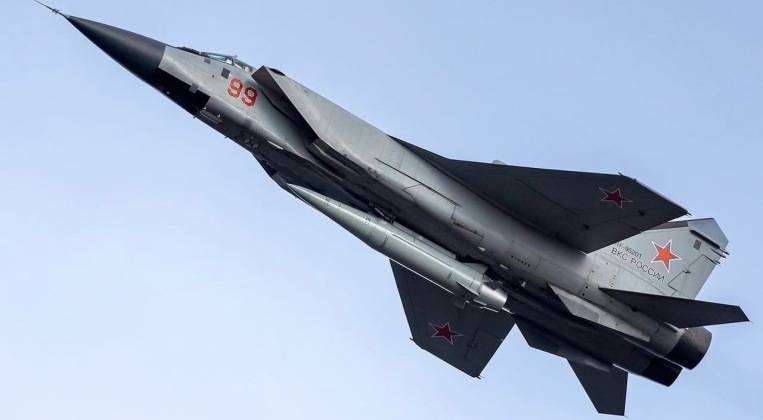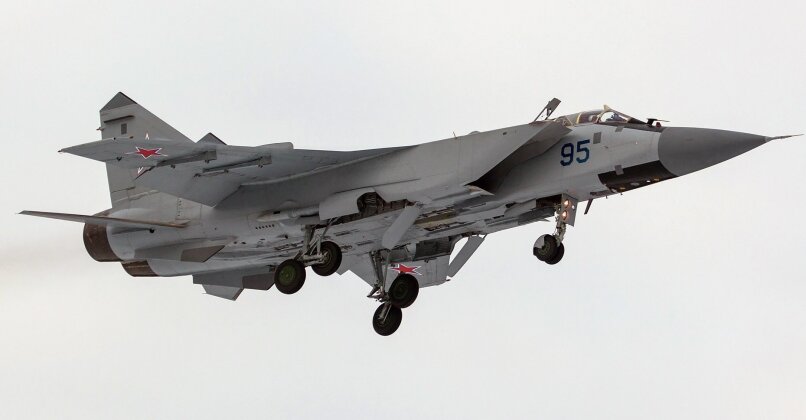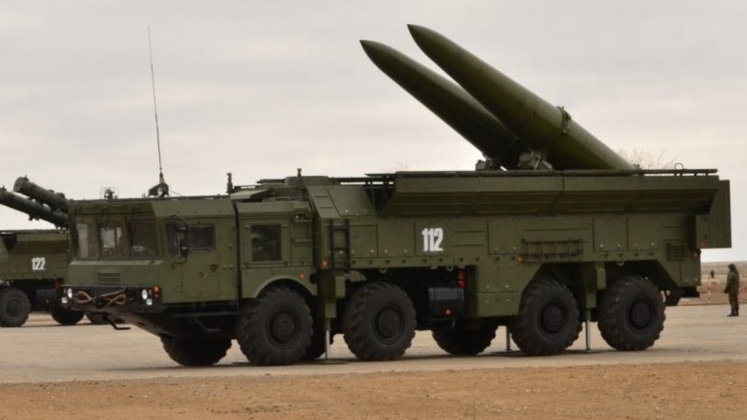News
MiG-31K ‘Patriot Killer’: How Russia Developed its Most Accomplished Strike Fighter and Why it Won
On May 16 Russian Air Force MiG-31K strike fighters launched Kh-47M2 Kinzhal ballistic missiles to target a Patriot air defence system in the Ukrainian capital Kiev, and reportedly successfully destroyed the command/radar vehicle and five launch batteries. With the Patriots according to Russian sources having fired 32 surface to air missiles to attempt to intercept the incoming attack, none of which struck their targets, the operation highlighted both the limitations of NATO’s top long range air defence system, and the advanced capabilities of the MiG-31K and its primary weapon. Entering service from late 2017, the MiG-31K quickly saw numbers in service expand with over 30 thought to currently be operational – although some estimates place numbers at over 40. The aircraft were not newly built, but leverage Russia’s very large stocks of hundreds of Soviet built MiG-31 airframes which were quickly placed in reserve after the end of the Cold War. With post Soviet Russia unable to afford their operational costs, many of the aircraft flew for only a fraction of their service lives before being mothballed, leaving the Russian Air Force in a strong position to very rapidly expand its active Foxhound fleet without initiating new production.

The MiG-31Ks have joined a fleet of over 100 MiG-31BM/BSM interceptors in service, with these variants designed for air to air combat at very long ranges and carrying oversized air to air missiles such as the R-37M accordingly. The MiG-31 was designed with a long range and massive missile carrying capacity to accommodate the world’s largest air to air missiles, and is currently the heaviest aircraft in the world fielded in an air to air combat role. The class’ radar, the Zalson-M, are also by far the largest in the world built for air to air combat several times as large as those on widely used Western fighters such as the F-16. It is also the fastest operational manned combat aircraft in the world, and was 20 years ahead of any Western fighter or interceptor to use an electronically scanned array radar. The MiG’s flight performance and the large quantities of airframes available made it an optimal choice to be lightly modified into a strike fighter under the MiG-31K program to carry the very large Kh-47M2 air launched ballistic missile. Indeed, as early as the 1980s the MiG-31’s potential for carrying particularly large munitions was recognised, which when paired with its very high altitude ceiling made it an optimal candidate to be developed into an anti satellite warfare aircraft under the MiG-31D program. The Foxhound is also expected to receive new classes of air to surface missile in future to complement the Kinzhal, including an air launched variant of the Zicron hypersonic cruise missile – the original which began to be fielded by the Russian Navy in 2019.

Despite its advanced capabilities, the Kh-47M2 ballistic missile was not developed as a clean sheet design and instead representes an air launched derivative of the 9M723 ballistic missile from the Russian Iskander-M system, which first entered service 2006. As an air launched missile the Kinzhal benefitted from a much longer range, but many aspects of its flight performance remained similar to those of the original missile. The capabilities of the Iskander’s missiles were perhaps best summarised by analysts at Svenska Dagbladet, who assessed: “The trajectory of the missile is not quite a ballistic one; [it] can manoeuvre, but it is unable, say, to rise if it is already falling to the ground… The Iskander can reach very high speeds when the missile is directed downwards, some 2-3 kilometres per second [Mach 5.8 to 8.7]. To be able to shoot down a missile at such speeds, a very advanced air defence missile is required. Also, the missile must be very close to the target.”

Providing this kind of strike capability to a fighter made the MiG-31K effectively unique in its potency as a strike aircraft, particularly when considering that the Kinzhal retains the capability to target warships as well as surface targets. These capabilities, which were first pioneered in the 1980s by the Soviet OTR-23 Oka ballistic missile system, made the MiG-31K the ideal aircraft to neutralise Patriot air defence systems in the Ukrainian capital – fulfilling the promises of multiple senior Russian officials that systems would be neutralised almost immediately after deployment. While many other missiles in the Russian arsenal such as subsonic Kalibr cruise missiles could be vulnerable to interception by Patriot systems, the MiG-31K and Kinzhal’s capabilities allowed them to effectively ‘kick down the door’ to ensure a higher success rate for other kinds of missiles. This leaves Russia with much more freedom to pursue further destruction of critical infrastructure in Kiev, as it has done in other Ukrainian cities, which placed a much greater burden on Ukraine’s Western supporters and raises the risk that major cities could be left unliveable and need to be abandoned. Destruction of the Patriot system also comes as Ukraine’s other air defence assets have become critically depleted, which has allowed the Russian Air Force to play a growing role in the war effort.












